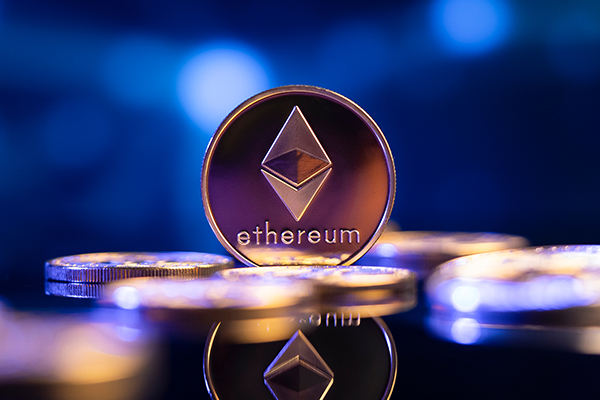Sonik Kaila, Startup-Trainee | Deutsche Telekom
Tobias Jung, Product Owner Staking| Telekom MMS
Currently, Ethereum is still using the proof-of-work consensus, on which Bitcoin is also built. However, the Ethereum Foundation has decided to use the more environmentally friendly Proof-of-Stake consensus for its public blockchain in the future. This switch from PoW to PoS is known as „The Merge.“ The Ethereum community has been working on the transition to Proof of Stake since 2015 and is expected to do so in the second half of 2022.
The merge will be implemented through a series of upgrades that should theoretically make the Ethereum blockchain faster and cheaper. It will also make the blockchain much more environmentally friendly. At peak times, Ethereum suffers from slow transaction times and high costs – a simple swap on Uniswap for $1 worth of tokens cost over $50 in pure transaction fees during this time. At this point, it should be noted that the merge itself will not reduce transaction costs but will only lay the groundwork for upgrades that are expected to reduce costs in the long run.
As a preliminary step before implementing the merge, the Ethereum Foundation introduced the Beacon Chain. This already uses the proof-of-stake consensus mechanism, so so-called staking is used to secure the network. The Beacon Chain was launched in December 2020 and has been successful since its introduction. There are now over 400,000 validators working to secure the network. Through the merge, the mainnet version of Ethereum will become part of the Beacon Chain. With the completion of the merge, Ethereum will be fully converted to PoS which is expected to reduce the energy consumption of the Ethereum blockchain by approximately 99.95%.
It should be noted that by merging the two chains, it will not be possible to directly access the ETH tokens that have been staked. Therefore, the Ethereum Foundation, proposes a post-merge „cleanup“ upgrade through which the payouts can be activated.
What will happen after the merge?
Vitalik Buterin, Ethereum co-founder, presents a roadmap in his blog „Endgame“ on how to make a blockchain fast, secure and decentralized – known as the blockchain trilemma. This roadmap serves as a guide for how Ethereum should develop further. He divides the roadmap into five stages, which run in parallel:
- The Merge
- The Surge
- The Verge
- The Purge
- The Splurge
The roadmap starts with the Merge and the associated full transition from Ethereum to Proof-of-Stake. The biggest benefits for Ethereum will be deflationary ETH prices, carbon footprint reduction, and the foundation for future scalability improvements.
The Merge and the following upgrades are setting the foundation for massive scalability by enabling Layer 2 solutions to offer low transaction fees while leveraging Ethereum’s security. Layer 2 solutions take the massive compute tasks from the Ethereum mainnet and run them at higher speeds for a fraction of the current cost, while leveraging Ethereum’s security.
As the Ethereum network grows, so does the blockchain database exponentially. This can limit scaling, as nodes need to store all blockchain data. „The Verge“ and „The Purge“ phases of the roadmap aim to fix this very problem by technically changing the way the blockchain handles and stores the database. In the future, all nodes will no longer need to permanently store all historical blocks. Instead, nodes will no longer store any history older than one year. This means that hardware requirements for nodes will decrease, and network bandwidth will increase. Decreasing hardware requirements also makes it possible for more people to participate at low cost. This contributes to the additional decentralization and increase in security of the network.
Finally, after all the technical upgrades, the Ethereum founder believes that the network will be ready to handle mainstream applications by simplifying the use of Ethereum and making it accessible to an average user – referred to as „The Splurge.“
These explanations do not represent the official roadmap of the Ethereum Foundation, but a vision of Vitalik Buterin. Nevertheless, his vision helps us understand what obstacles lie ahead and what technologies can finally make public blockchains ready for public adoption. And with the Merge planned for this year, all eyes will be on Ethereum and the success of it will determine the road ahead for crypto in general.
> Teleko, MMS Supports Ethereum Blockchain with StakeWise
More information about our service you can find here

Sonik Kaila is a startup trainee at Deutsche Telekom and has been supporting the Blockchain Solutions Center of Telekom MMS as a business analyst.

Tobias Jung is a Product Owner in the Staking Unit, at the Blockchain Solution Center of Telekom MMS, a subsidiary of Deutsche Telekom. There, he builds infrastructure for public blockchain networks. Previously, he worked in various tech software startups. Tobias graduated from Lund University with an MSC in Business Administration. He has been involved in the crypto space for years.

Ob Digitalisierungsexpert*in, Werkstudent*in oder Schülerpraktikant*in – Hier berichten unsere Gastautoren aus ihrem Alltag.









